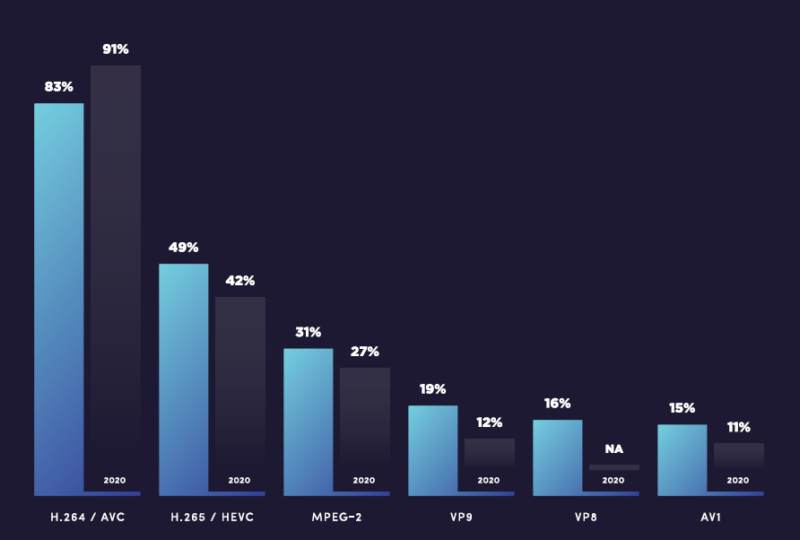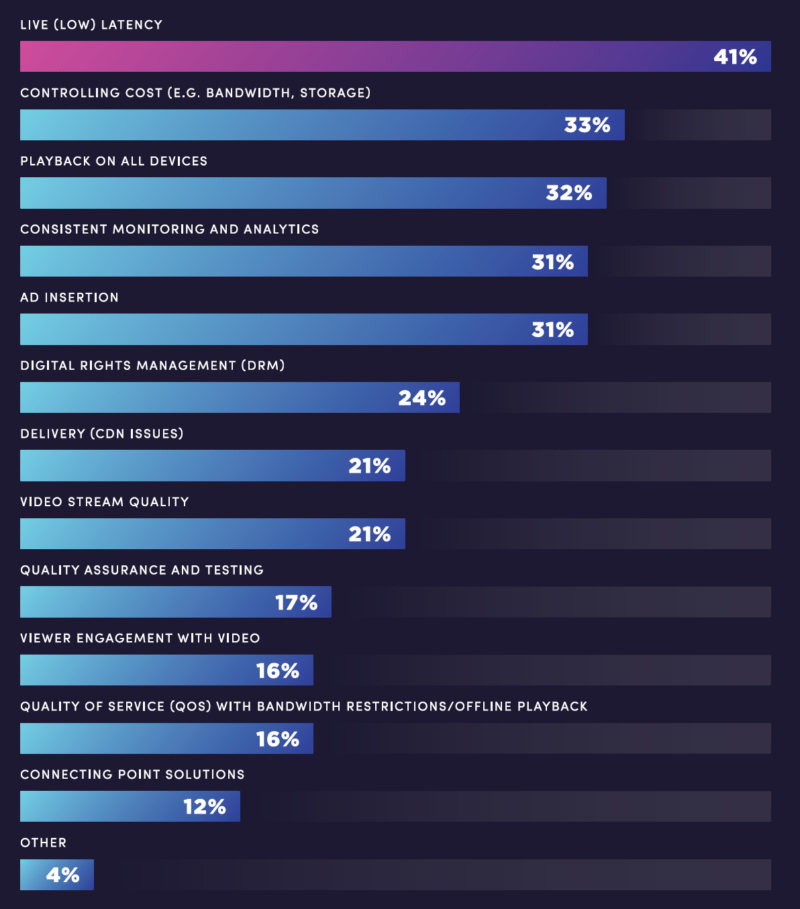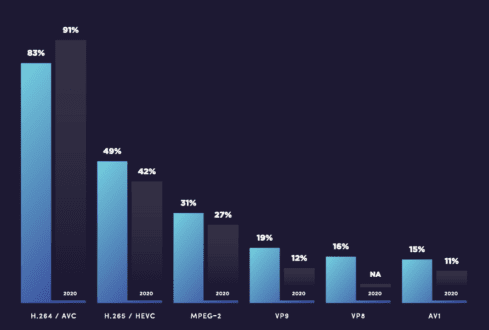Every year around this time, like an early Christmas present, Bitmovin releases its Annual Video Developer’s Report, a must-read for all streaming media professionals. Now in its fifth year, the report contains valuable insights regarding codec usage, production workflows, and the issues that are keeping streaming professionals up at night, literally or metaphorically.
To produce the report, Bitmovin surveyed 538 video developers, industry experts, customers and prospects from 65 countries. Respondents were predominantly in three key industry categories: broadcasters, integrators, and OTT streaming services, and more than two-thirds of survey participants hold technical roles.
The report covers a lot of ground, from codec and low-latency technology usage, to CDN solution and player codebase, to monetization, DRM, advertising, and analytics. I always jump to the codec usage stats first and learned that for the first time ever, H.264 usage actually dropped, from 92% to 83%. I could see this happening in some vertical markets like contribution or live origination, but otherwise, this datapoint left me scratching my head.

Otherwise, HEVC usage jumped from 42% to 49%, which feels right, while AV1 increased from 11% to 15%, far lower than the 22% predicted in last year’s survey. Meanwhile, predictions for 2022 usage of EVC (11%), LCEVC (11%), and VVC (20%) were all quite bullish given the paucity of players, particularly for EVC and VCC-it will be interesting to check the accuracy of those predictions next year.
Meanwhile, HLS (73%) retained its ABR crown, followed by MPEG-DASH (64%), Smooth Streaming (29%), and CMAF (26%), though 23% of respondents predicted using CMAF within the next twelve months, by far the leader.
What’s keeping video producers up at night? If you guessed low-latency streaming, you’d be right by a long shot (Figure 2). It’s shocking that video stream quality has dropped to eighth (we’ve come so far since 28.8 kbps connections); perhaps that’s the reason that H.264 has hung on so long, though controlling costs, which came in second, is always the flip side of that equation.

Other data points that I found interesting included:
- 37% of respondents used a cloud encoding service for VOD while 38% ran their own software encoder in the cloud.
- That LL-HLS (33%) led the low-latency pack over LL-DASH (30%), WebRTC (21%), and Websockets (16%).
- That bitrate delivered, buffering duration, and buffering rate were the three most important video performance metrics, with video startup time second to last.
Lots more there though, and I’m sure every reader will find different data points compelling.
If I had to guess, I’d say that between the presentations and lessons that I create and the advice I give to my consulting clients, I probably refer to the Bitmovin Video Developers Report 10-20 times a year. If you’ve never seen it, take a look; if you have in the past, you will definitely find this year’s version useful.
 Streaming Learning Center Where Streaming Professionals Learn to Excel
Streaming Learning Center Where Streaming Professionals Learn to Excel









